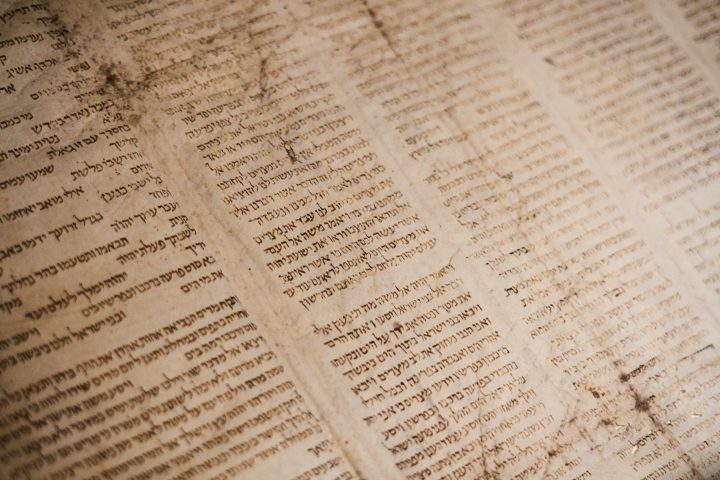
According to statistics, only 31% of America’s population believes that the Bible is absolutely accurate and should be obeyed word-for-word. 19% believe that the Bible is simply fables, legends, or ancient history, and 47% percent believe that the Bible may be inspired by God but shouldn’t be taken literally.
Although so many people have dismissed the Bible as false, how many of them have actually done research and come to a factual conclusion about what they believe? Maybe if the time was taken to ask questions and figure out things for yourself, many more people would accept the Bible as accurate and true.
But how exactly can we prove this?
Here are three facts I’ve found helpful, that will better equip you with the information needed to share what you believe with those around you.
Extra-Biblical Evidence:
Some may argue that Jesus is never mentioned outside of the Bible. However, mentions of Jesus and his disciples can be found throughout many 1st-century historical accounts. Several of these accounts are from the most important Jewish historian of the time, Titus Flavius Josephus.
Throughout his books (Jewish War, Jewish Antiquities, Life of Josephus, and Against Apion) much evidence is found that lines up exactly with Biblical accounts. This is interesting, because Josephus wasn’t a Christian, and had no reason to be biased— he was just a historian recording the important events that took place around him.
The North American Mission Board states, “Josephus has always been deemed a crucial extra-biblical resource, since his writings not only correlate well with the Old and New Testaments, but often provide additional evidence on such personalities as Herod the Great and his dynasty, John the Baptist, Jesus’s half-brother James, the high priests Annas and Caiaphas and their clan, Pontius Pilate, and others.”
Our second source of historical evidence is Publius Tacitus, a historian who recorded many events that took place the same time the Gospel of Luke and the Book of Acts were being written. From his writings we hear more mentions of Biblical happenings. For instance, in his book The Annals, he mentions Christianity, referring to it as “a most mischievous superstition”. He claims that it was spreading through Judea and even Rome during the time he was writing.
Reasonable Theology states that, “It is obvious that Tacitus is not a sympathetic witness to Christianity, and this helps lend further credibility to his account. [Through his writings] we are able to gain insight into several important facts: The Christians being blamed are named after a historical person called Christus (Latin for Christ). This Christus “suffered the extreme penalty,” which is a reference to Jesus’ crucifixion. (See Luke chapter 23) The execution was carried out by Pontius Pilatus, just as we see in the New Testament.”
Although we only looked at two major historians, there are many more like them that help prove the existence of Jesus, and the accuracy of the Bible. For example: Pliny the Younger, the Babylonian Talmud, and Lucian are all more sources that mention Jesus and early Christianity.
Accuracy Compared to Other Popular Works:
Many historians today hold in high esteem books like The Illiad, The Odyssey, and works written by Sophocles, Aristotle, and other ancient philosophers. But what if I told you, that according to non-biased analysis and study, these books have more chance of being fake and untrustworthy then the Bible does? Here’s why.
Homer’s The Illiad is 560 pages long and is estimated to have been written in BC 762. There are only 643 handwritten manuscripts in existence today, and the oldest was written 500 years after the original. When analyzed, The Illiad has 764 lines of textual corruption (meaning the content was changed or altered in some way) which makes it 95% accurate.
Accordingly, Sophocles’ writings were analyzed like this: 193 handwritten manuscripts, and the oldest dates back to 1,400 years after the original. Aristotle’s works were the same: only 49 handwritten manuscripts, and the oldest was estimated to have been written 1,400 years after the original.
With so much time between the original copies and the oldest surviving manuscripts, a lot could’ve been altered. And as we saw with The Illiad, often, that was the case. Because of this, many people have used the same argument against the Bible. So, to rebuff that accusation, the same study and analyzation process was done, and the results were amazing.
Of just the New Testament alone, we have 24,000 handwritten manuscripts, and the oldest fragment was from the Gospel of John— written only 40 years after the original. The oldest completed New Testament dated back to 300 years after the originals, which is better than any of the other works listed above. As for textual corruption, there are only 40 altered lines in the entire New Testament, making it 99.5% accurate.
When you compare the Bible’s accuracy with other popular works, no matter what you believe, the evidence points to an almost completely accurate book.
Textual Criticism:
Along the lines of Biblical accuracy, you have to take into consideration textual criticism. This means critically analyzing manuscripts and variations in Biblical text to see which is closest to the original, and therefore most accurate.
Many people argue that modern translations of the Bible cannot be trusted because they have fewer lines than older translations such as the King James Version, etc. However, there is a clear explanation for that issue. Older translations often have more lines, because they include text did not appear in the earliest copies. More modern translations attempt to remove the added text, so that actually adds to their trustworthiness.
But where did the extra lines in the KJV come from?
Some scholars believe that the extra lines were because of subscripts from ancient scribes, that were mistaken for original Biblical text. While writing, sometimes scribes would add their own insight or an interpretation of the scripture, and often this would be translated and added onto the chapter or verse being written. So, contradictory to common beliefs, verses were never really removed the Bible, they simply weren’t part of it in the first place.
This may be reassuring, but another important question comes up in its place.
Does textual criticism undermine the authority of the Bible?
New Testament scholar Brandon Crowe answers that question wonderfully, “Textual criticism does not undermine inerrancy [of the Bible]. Those who copied the Bible in antiquity were people just like us. Many of them were quite proficient copyists who produced very accurate manuscripts, but even so, no copy is perfect. The New Testament was copied by thousands of people in thousands of places in dozens of languages. Though this can make textual criticism complicated, this diversity is also a blessing, since it would not be possible for any one person or sect in the ancient world to collude to produce an inauthentic Scripture.”
Instead of seeing textual criticism as a way to cover up inaccuracy and fault in scripture, is actually a blessing. The fact that there are scholars who are willing to study old manuscripts of the Bible—just so we can have the most accurate translation— is truly miraculous.
Besides the evidence I shared, there is much, much more that can be found with just a bit of research. So, before you or a friend reject Christianity as a myth, think that choice through. Do some research and ask some questions. When you look at the supporting facts and historical evidence, you will hopefully come to a better conclusion than you would if you believed only what you are told.









Thanks, Reece!
This is a great faith-booster.
What great apologetics!
How would you respond to this statement: Never believe an extra-ordinary claim (such as a dead person sighting) when the eyewitness status of the person making the claim is in dispute.
https://lutherwasnotbornagaincom.wordpress.com/2023/01/30/never-believe-an-extra-ordinary-claim-when-the-eyewitness-status-of-the-person-making-the-claim-is-in-dispute/
Thanks,
Gary
I’m curious if the word-for-word literal accuracy applies to Noah’s Ark and the claim that more than a million species of animals could have been loaded on and survived the whole time.
I just finished reading the article that you just linked, but this proves nothing he is saying that just because a couple of people saw him doesn’t mean that he actually rose from the grave. If this is his argument then he is implying that he needs rock-hard evidence that he rose from the grave. We require faith with everything that we read if we are talking historical evidence everything is based on eyewitnesses if we use the same argument he used how do we really know that Claudius really was poisoned? can we really trust these eyewitnesses? everything requires faith and I truly believe that he rose I didn’t see him get raised but there is a historical eyewitness that he did and I is willing to go by what they say just like all our entire history is interpreted
Well done! God has obviously given you a gift for research and writing and we desperately need that today in Christianity. Forgive me for sounding like a grandfather, but I am old enough to be your grandfather. Please keep your mind and heart keenly focused on Jesus or you could end up joining the hoards of people who are gloating that they are too intelligent to believe in God or the Bible.